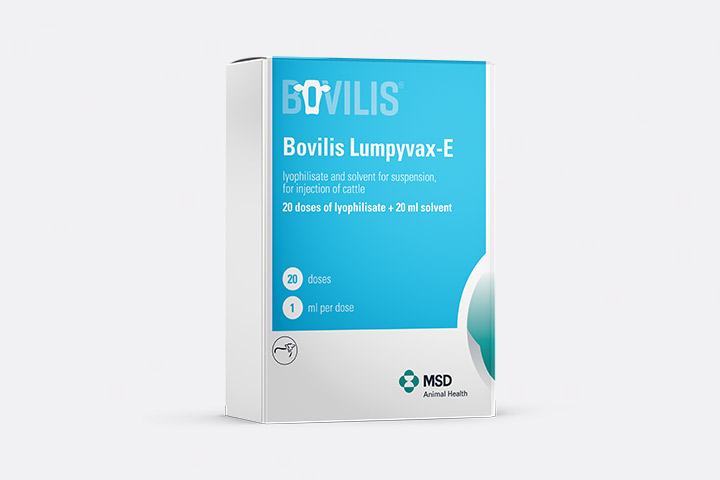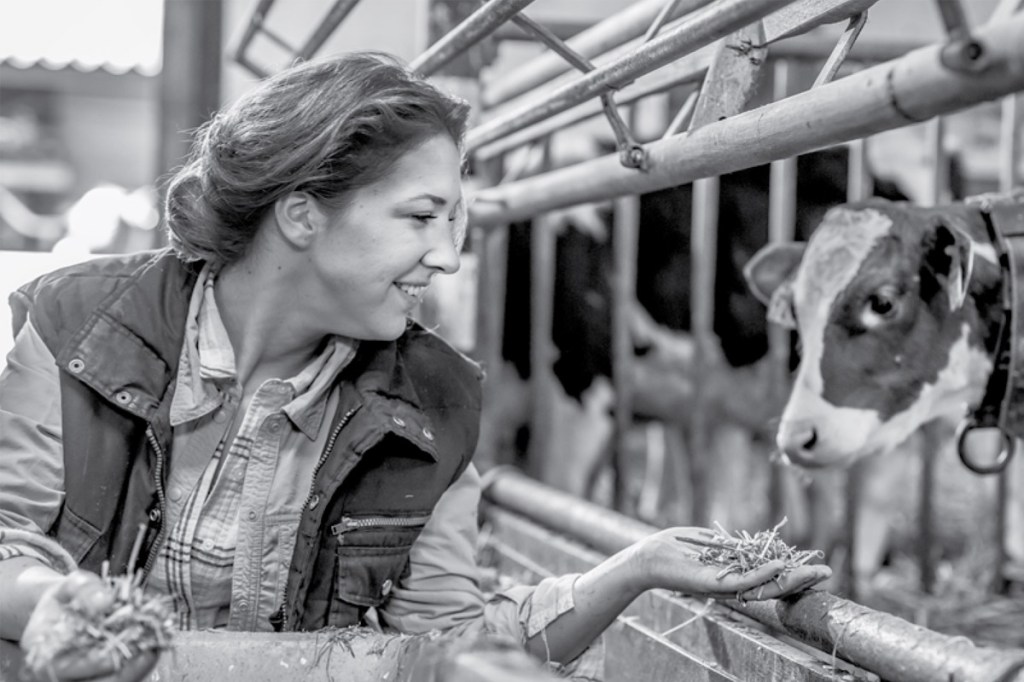

Lumpy Skin Disease (LSD)
Lumpy skin disease is a WOAH-listed notifiable disease caused by
the lumpy skin disease virus, affecting cattle and water buffalo.
● Transboundary disease ● Viral pathogen
● CLINICAL SYMPTOMS ● HEALTH AND PRODUCTIVITY CONSEQUENCES
● Economic & trade impact ● Prevention and control
Lumpy skin disease is a high consequence transboundary animal disease that primarily affects cattle and water buffalo.
It causes huge economic loss impacting animal health, production, productivity, and trade restrictions.
It is transmitted mostly indirectly through insect vectors including biting (flies, midges, mosquitoes,
ticks) and non-biting (house fly) insects play a significant role in disease transmission. It is an
infectious, eruptive, occasionally fatal disease characterized by nodules over the body. Vaccination has
been found as the most effective control measure, particularly during an outbreak.
Transboundary disease
Lumpy skin disease is considered a transboundary disease due to its significant economic impact and rapid spread across international borders aided by animal movement and vector populations. In the last few decades, the disease has shown an expanding geographic range from the endemic regions in Africa, to the Middle-East, Asia, Russia, and some European countries. The disease can rapidly spread across a region making immediate implementation of disease control measures including vaccination, movement control, and selective culling imperative. Vaccination has been shown to play a significant role in curbing the spread, control, and eradication in countries with an lumpy skin disease outbreak.
Viral pathogen
Lumpy skin disease virus is a type of pox virus classified in the genus (or group) Capripoxvirus. It is closely related to Goatpox Virus (GTPV) and Sheeppox Virus (SPPV), however as it is species specific, cattle and water buffalo are mainly affected. Some wild animal species can show signs of lumpy skin disease. For disease control it is essential to mainly focus on cattle and water buffalo. Lumpy skin disease virus is mostly transmitted indirectly through insects (‘vectors’), including biting flies, midges, mosquitoes, and ticks. Insects are infected with the virus when they bite a diseased animal and then spread it to healthy animals. Typically, lumpy skin disease exhibit a seasonal disease pattern with high number of cases and outbreaks seen during warm and humid months, that promotes insect population growth and disease spread.
Clinical symptoms
- Numerous nodules all over the body, varying in size which can be well circumscribed, round, slightly raised, firm, and painful
- Fever
- Nasal and ocular discharge
- General lethargy
- Sudden decrease in milk production
- Death in serious cases
Health and productivity consequences
Lumpy skin disease is an economically devastating disease for the producers with serious production losses and management cost. The disease causes high morbidity and sometimes may lead to death in infected cattle. The economic losses in dairy and beef cattle are attributed to considerable reduction in milk production, secondary mastitis, inappetence and weight loss, poor growth, abortion, temporary infertility and sometimes permanent sterility, and damage to the animal hide. Furthermore, the cost of treatment and disease control also adds to the producers’ financial burden.
Economic & trade impact
World Organization for Animal Health (WOAH) sets standards for safe international trade of live animals and animal products. WOAH categorizes lumpy skin disease as a notifiable disease and therefore, any lumpy skin disease affected country faces serious economic consequences due to imposed international trade restrictions.
Prevention and control
Vaccination is the most effective means of controlling lumpy skin disease in endemic
regions as well as being the most effective measure for countries previously free of lumpy skin disease (EFSA 20171). Whilst there are different types of vaccines available, the homologous (Lumpy skin disease virus-based) vaccines containing the Neethling strain have been proven in widescale mass vaccination programs (EFSA 20192). For effective control and eventual eradication of the disease, a high-quality vaccine should be used in combination with movement restrictions, surveillance, and strong biosecurity measures including vector control. Selective culling can also be considered in countries previously free from lumpy skin disease.

What you do early in the life of a calf will have a substantial impact on the rest of its productive life
Bovilis® cattle vaccines against Lumpy Skin Disease (LSD)

Bovilis® Lumpyvax-E
Bovilis® Lumpyvax-E is a live attenuated Neethling virus vaccine used as a subcutaneous injection for the prophylactic immunization of cattle of all ages for the control of lumpy skin disease.
Go to your country website
References:
- https://efsa.onlinelibrary.wiley.com/doi/epdf/10.2903/j.efsa.2017.4773
- https://efsa.onlinelibrary.wiley.com/doi/epdf/10.2903/j.efsa.2019.5638


